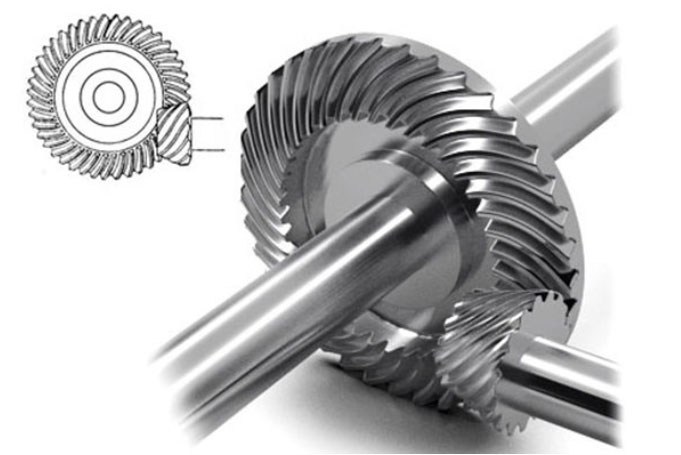Hypoid gears are indeed playing a significant role in redefining quiet operation in various machinery applications. Here’s how hypoid gears are contributing to the silent revolution:

- Offset Design: The offset configuration of hypoid gears allows for larger contact ratios compared to other gear types. This means that multiple gear teeth are in contact simultaneously, distributing the load across a broader surface area. This distributed load helps reduce localized pressure and noise generation during gear meshing, resulting in quieter operation. The offset design also minimizes sliding friction, further contributing to reduced noise levels.
- Helical Tooth Profile: Hypoid gears often feature a helical tooth profile, which provides a gradual engagement and disengagement of the gear teeth. The helical teeth mesh smoothly and gradually, resulting in reduced impact forces and vibrations. This smooth engagement helps minimize noise and ensures a quieter operation compared to gears with straight-cut teeth. The helical tooth profile also improves the load distribution, enhancing gear performance and durability.
- Tooth Surface Finishing: The surface finish of the gear teeth has a significant impact on noise generation. Hypoid gears are manufactured with precise tooth surface finishing techniques such as grinding and honing. These processes ensure a smooth and high-quality tooth surface, reducing friction, vibration, and noise. The improved tooth surface finish contributes to the overall quiet operation of machinery.
- Vibration Damping: Hypoid gears exhibit good vibration damping characteristics due to their offset design and tooth engagement pattern. The sliding action between the gear teeth absorbs and dissipates vibrations, reducing the propagation of noise through the gear system. This damping effect helps maintain a quieter operating environment and enhances the overall smoothness of machinery operation.
- Noise-Reducing Lubrication: Proper lubrication is crucial for noise reduction in gear systems. Hypoid gears can be designed to work with lubricants that have noise-reducing properties. These specialized lubricants often contain additives that enhance lubrication film formation, reduce friction, and dampen vibrations. The use of such lubricants in combination with the unique characteristics of hypoid gears helps further minimize noise levels during gear operation.
- Precision Manufacturing Techniques: The manufacturing process of hypoid gears involves precise machining and finishing techniques. Advanced machining technologies, such as CNC (Computer Numerical Control) machining and gear grinding, enable the production of gears with tight tolerances and accurate tooth profiles. This precision manufacturing ensures better gear meshing, reduced backlash, and improved noise performance.
- Application-Specific Design Optimization: Hypoid gears can be customized and optimized for specific machinery applications. By considering factors such as gear geometry, tooth profile, material selection, and lubrication requirements, engineers can design hypoid gear systems that prioritize quiet operation. Application-specific design optimization helps achieve the desired balance between noise reduction and overall gear system performance.
The silent revolution brought about by hypoid gears is particularly valuable in applications where noise reduction is critical, such as automotive transmissions, industrial machinery, and power tools. The quieter operation not only enhances user comfort but also contributes to improved productivity, reduced maintenance needs, and extended equipment lifespan. As a result, the adoption of hypoid gears is becoming increasingly prevalent in industries that prioritize noise reduction and seek to provide a more pleasant and efficient working environment.
